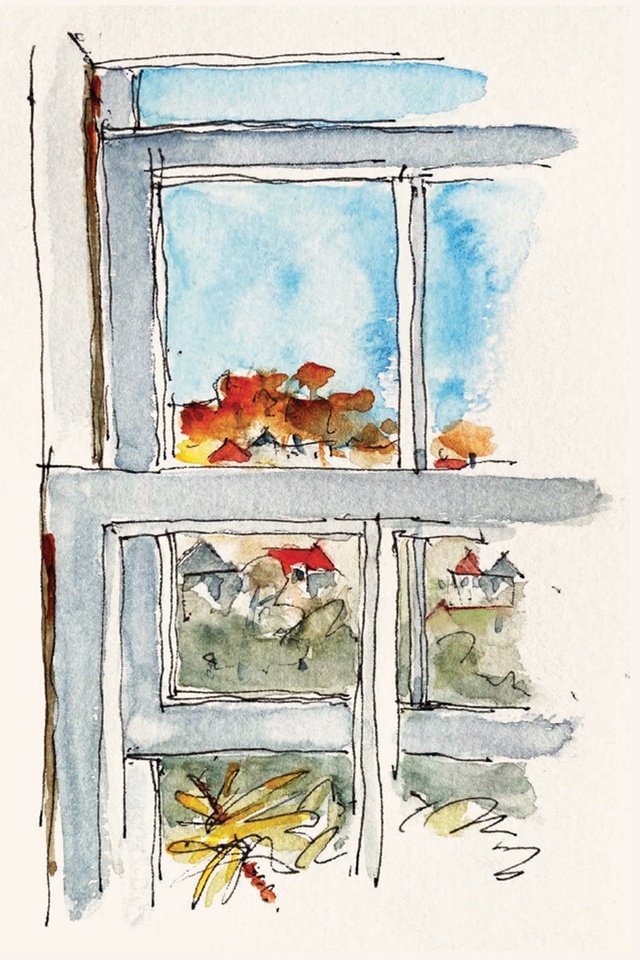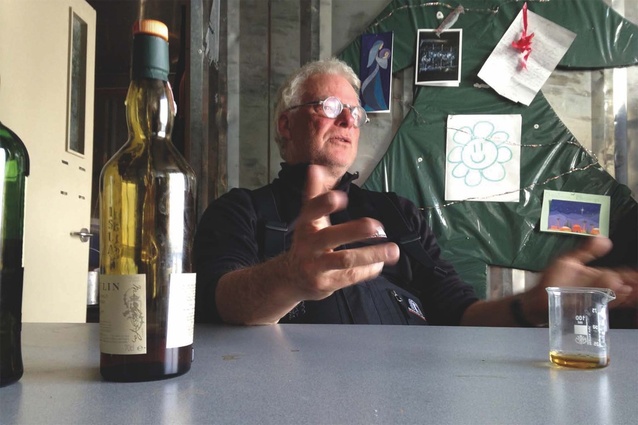House talk
Pip Cheshire has a quiet conversation with his house, where its lived-in nature provokes questions about whether such character can be found in today's high-tech builds.
My house talks to me. It talks of seasons in a language that I barely notice from day to day. It is both a sign language and one of irregular sounds: of distant clicks and slow sighs, often drowned by the clatter of daily domestica. Occasionally, when some activity or another gives me time to pause, I look closely at the changes creeping slowly into the house and take pleasure in measured reflection. I observe the results of slow, gentle and inexorable movement: a folding in the wall lining and buckling of the once-flat sheen of yellow paint, a door jamb chipped of paint from daily, unplanned passing encounters with a recently misaligned door.
I pass these little notes the house has left me, barely seen and not considered as the demands of the day prevail. At best, each might be just another addition to that long maintenance list that I am sure I will knock off come a summer’s day: a pair of shorts and a tee shirt, a hammer, nails, a paintbrush, working around the house in my optimism, as if I were decades younger. But, if the day gives me space to reflect, I enter the building’s lifetime, musing on the possible causes that have set the assembly of mute materials moving.
What is it that has set the cracks in the lining to action; does the fold’s location suggest a cause? Is it an overstressed sheet joint bespeaking some discomfort in the framing, a slight shift of the studs recording a change in air pressure, density or humidity that has the timber twisting ever so slightly? Does a half a degree of rotation or a slight swelling of a joint telegraph the resultant stress to the rigid plasterboard and the sheet’s brittle matrix find relief in deformation? Or have the unseasonal rains of late caused the high-expansion clays beneath the section to swell, the ground heaving and carrying the house with it, no more than a tick upon the rump of that Ponsonby hillside falling from the ridge high to the south to the old foreshore below?
When we first met the house, it must have had a thousand stories to tell, had I listened. The creak and groan of our ascent up a sagging wooden stair overlaid with plaster and chicken wire as we carried our boxes inside were unheard in the first flush of ownership. It was really a bit chaotic: a basic villa; four square rooms, a passage down the middle under a tent-like roof and long lean-to out the back. The verandahs had been filled in to create additional bedrooms using all manner of leftover bits and pieces, making long narrow spaces either side of the recessed front door. The verandah balustrade was still there, now supporting sliding doors from the 1960s, rotated to form long, low windows in disturbing contrast with the more vertical proportions of the villa.
Did the stream of ants we stepped over, making their way across the sun-warmed stoop, have their own stories, too? Might they have told me about the borer that tunnelled out the timbers in the subfloor basement, making the cross-section of bearers as hollowed out as a Manhattan subway interchange? Or might they have explained the crowd of doors, side-hung casement sashes, double-hung frames and little top lights that leant against the jack studs in the Stygian subterranean gloom?
In time, I hauled the windows out and laid them on the lawn, trying to match sash with frame. But they made no sense. I couldn’t tell if they were the remnants of the house’s intransigence having defeated the hopes of earlier owners, their alterations abandoned mid-hammer swing. Or, perhaps, they had pulled out some windows and, in deference to the site’s difficult access, slotted them deep underneath the house rather than carry them down the slope to the road below. Later, I would butcher those sashes, relying on thick, gap-filling glues to cover up the shortcomings of my primary-school woodworking skills as I pieced sash with unmatched frame to make new windows.

I should have sought out more of the house’s unspoken stories when we first arrived, thought more of the creaks and cracking sounds as we walked through the house. I was, though, impatient to make my own mark and correct the floor’s 300-millimetre fall. I set aside gentle rumination and created a cacophony of hammering, cranking and, I am afraid, swearing, drowning out any subtle communications the house might offer.
I think, at this point, I was more chiropractor, wrangling bent and time-dried bearers and joists into a marginally more Cartesian arrangement. The house responded as I might at such outrage, with the crash of fallen skirtings and scotias, the crack of a nail giving up its grip and the thundering collapse of a fire surround parting from its supporting wall. Later, with a relatively stable and level floor plane, the days shorter and the weather colder, I pulled the front of the house off to restore its cheerful verandahed façade. Though I was no longer the crude manipulator of jack and lever to achieve an approximate level, I was more sawbones than surgeon, as the still-visible scars of my butchery will attest to today, if examined in quieter moments.
And so it has gone for 40 or so years: periods of quiet enjoyment then months of assault, the house resolutely accepting of its most-recent insults. It is as if it has learnt to live with the reconfiguration of walls and rooms, the layering of sheet materials and panelling over scrim and timber framing and only occasionally curling the edge of a sheet or sticking a door to mark the changing seasons, and let us know that, while we might scurry about on our daily business, the house moves at a slower pace.
I am not sure this is information that should get out to my clients who, by and large, expect our projects to be mute, squared away and stable. They take, too, a dim view of such obvious failure as deformed lining and would be unnerved by my wry acceptance of it. For all that, we daily play with the effects of degradation and aging in our work, carefully selecting timbers for their colour transformations under the sun’s ultraviolet light, coupling that with the oxidation of uncoated metals and the growth of microscopic organisms on brick or concrete to achieve desired outcomes.
The language of ‘raw’, unfinished materials is safe ground, the effects of weathering and donning a mantle of aging generates a soft, natural palette that sits pretty comfortably in all but the most urban of sites. Things become more interesting when we reach for more contemporary materials, many of which seem to forgo the graceful accumulation of age’s effects, working perfectly, looking pretty much brand new until suddenly, catastrophically, ceasing to work and becoming, not repairable, but requiring replacement.
I have not lived in an assembly of such materials long enough to know whether or not they have their own tongues. I have heard the sharp report of synthetic roofing moving under the sun’s caress and, alas, seen the stepped track of miscalculated loads in masonry walls but have not heard the sighing of a new house settling down for the night. Perhaps, again, I am moving too quickly, too preoccupied to hear. Perhaps the voices are muffled by the required accretion of substrates, sheets, sealants and insulation. I need to settle with a dram in a favoured chair and listen to what new houses are talking about. I’ll let you know what comes up.










